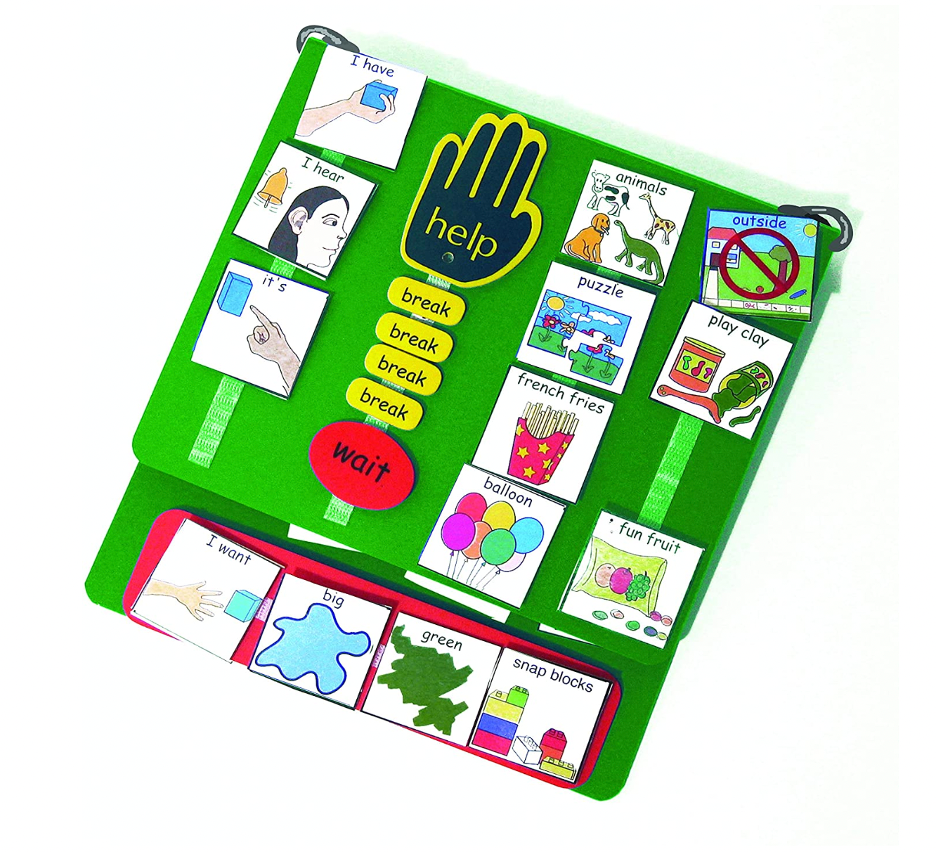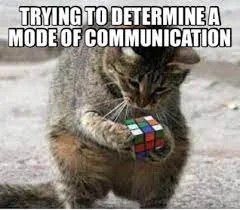Functional Communication
Our ability to communicate with others is essential to our ability to function as humans. We communicate to get our needs met, to express our emotions, to gain someone’s attention, to get out of things we don’t want to do, the list goes on and on. We have the ability to communicate in many different ways as well, we can communicate our displeasure with our spouse just by looking at them in that one particular way. We can communicate that we’re disinterested in what our co-worker is telling us by yawning or pulling out our phone to check Instagram, and we can communicate happiness by jumping up and down, by laughing, or by vocally stating “I’m happy”.
Imagine moving to Japan overnight, where you do not speak the language, recognize the alphabet, or understand the nonverbal gestures of the culture. Imagine trying to express that you have a stomachache, or that you’re tired and want to take a nap, or that you have a bug bite on your back and it’s itchy. Your level of frustration may rise quickly, resulting in yelling, stomping your feet, hitting someone who is touching you in a way you don’t want them to, or wanting to just stay in your room because it’s so much work just to get your point across. Without the ability to functionally communicate with others, behaviors quickly express what we cannot.
Children with language delay will often use behavior to communicate what they are unable to communicate in a functional way. All behavior serves a function, if you’d like a deeper dive into the functions of behavior see our previous post on the subject, I promise, it’s worth the read! When a child can’t say that they don’t want to wear those pants today, hitting will do just fine. When they can’t tell us that they had a rough day at school and just want to zone out on their tablet, a tantrum serves nicely. When they see a fountain on the other side of the courtyard they want to jump in, running straight towards it is the only option.
Now, let’s imagine that you taught your child baby sign language that they picked up quickly, they developed vocal communication well and can tell you what they want when they are calm, but they still engage in tantrums daily. Have you ever been so mad with someone that you lose the ability to communicate completely? I sure have, I’ve been so upset and mad that I could not clearly communicate what was exactly wrong and what I needed in that moment. Once I calmed down, I was able to rationalize how I was feeling and what upset me. The same thing happens in children, all the time. As they get older and emotions become more complex, they may need help expressing those emotions in a heightened emotional state. There are many ways we can put in some augmentative/alternative communication devices to bridge that gap as they continue to learn functional ways to communicate.
With many learners, that is exactly what these devices can do, bridge the gap, not veer to a different destination. I’ve had many parents express to me their worry that by introducing an AAC device they would be “giving up” on vocal communication, and that is absolutely not the case. Both the research and my own experience show that in many cases it is the spark that our learners need to understand how to communicate functionally which decreases frustration and paves the way for vocal communication to emerge.
Choice Boards
Choice boards are an excellent way to help you child answer the question “what do you want?” with very little response effort on their end. If they just need to point to a picture of the thing they want, their frustration will immediately reduce, and they learn better ways to ask for the things they need. Imagine a restaurant in a foreign country that has pictures of the menu items they offer, what a relief! We know what we’re going to get when we point to that picture.
Picture Exchange Communication System
The Picture Exchange Communication System (PECS) was developed by Andy Bondy and Lori Frost in 1985. It takes a choice board and expands on it. Where a choice board has options that are fixed, a PECS board will have those tokens attached with Velcro so the learner can pick up that picture and hand it to you to request what they want. The teaching protocol for PECS is based on the principles of Verbal Behavior outlined by B.F. Skinner which is my ABA nerd speak for the fact that this system has been around longer than Chrissy Teigen has been alive and is backed by scientific data. The teaching protocol for PECS has 6 stages, and in my experience, most learners make it through 3 or 4 and then vocal communication takes over and we’re off and running!
AAC Apps
Going further into our history of AAC, the invention of the iPad ushered in a new generation of AAC devices. There are several apps that are available on the iPad and other tablets that vary in cost and functionality. Where these devices excel is their ability to ‘talk’ for the learner, the vocal output that comes out of the device can act as the learner’s voice but also gives them a consistent model of what they can say to get their point across. We can model language for them by creating the sentence and having the vocal output talk it out as well.
How do I know which AAC is right for my child? The answer is, it’s not your job to know! Your child’s treatment team will likely start with choice boards and work up from there, and if more is needed the school district can do an assessment with an AAC specialist to identify what the right device is for your child. The beauty here is that these devices do not replace vocal speech and can drastically cut down on frustration for both you and your child. It acts as a translational device and guidebook for that trip to Japan until you begin to learn the language and the culture.







